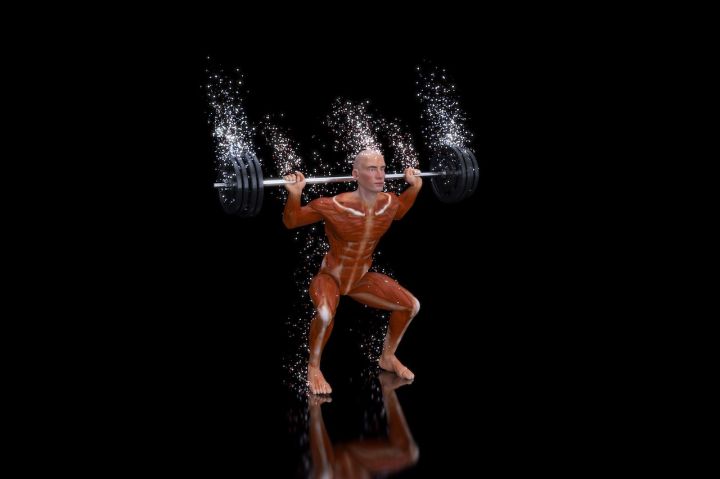Fitness. Should Be Clear About The Differences Before The Choosing.
The kind of life each person chooses to exercise is different, and this is mainly with their own habits. The actual fact is that you will be able to get a good deal on your own.

The two classic movements are the wall squat and the unarmed squat, both of which are static and dynamic.
Many people in life will be completely confused with these two movements together, politics feel that the two training methods to achieve quadriceps circumference breakthrough with leg muscle gain.
This statement is widely circulated, so many white began to use the wall squat instead of unarmed squat and so on, for fitness coaches there are certain differences between the two movements, today we will explain together.

The movement pattern is different
As we know, the biggest feature of the wall squat is static, this action can be completed as long as you insist on not moving.
This static training action target muscle groups, although in a tight state, but the muscle length will not occur along with the action elongation and contraction strength more solid, the stimulation effect is more single.
This shows that this type of training mode does not have a significant muscle gain effect, but it is more practical, on the one hand, can enhance the lower limb muscle endurance, enhance the stability of the knee joint, on the other hand, improve neuromuscular control is suitable for rehabilitation training after injury.
If life you want to muscle building for the purpose of training, is recommended that you can choose this one, will allow you to become stronger and stronger after adhering to it, will also allow you to femoral 4 head muscle separation more clear, back to the deep squat training.

The knee joint is under different pressure
Back neck squat is no way to achieve muscle contraction and weight increase, any deep squat compared to leaning against the wall, static squat when the body is stable on the wall, has been kept in a state of immobility, the center of gravity moved to the lower limbs.
Many newcomers want to keep themselves balanced through deep squatting, but it is not easy to control it squatting squatting is easy to make the toes on the ground, the heels off the ground directly lead to increased weight bearing knees, the result of poor movement, the risk of injury is extremely high.
Solution, the lower knee in the body's center of gravity and stability away from the orthopedic pressure on the knee joint is also relatively small, after doing this action action will not bring any uncomfortable feeling to the body's knees.

The deep squat when the knee click sound still dare to squat?
Many newcomers in the deep squat knee will issue a click sound, this is due to the joint popping friction sound, popping has a physiological and pathological difference.
If you are in the process of squatting, this is a physiological sound, which is a normal physiological phenomenon and disease does not have any relationship.
Physiological rattling involves the joint cavity and the joint fluid in the joint cavity. The joint cavity is under negative pressure and has a stabilizing effect on the joint structure. The joint fluid, on the other hand, has a lubricating effect.
If a person is pulling or bending a joint, the tension will exceed the negative pressure in the joint cavity, so there will be a gap, which will cause the surrounding gas to pass through it quickly, thus creating a vibration with it, which is the clicking sound we hear.
If there is a sound when you stand up from a deep squat, it means that the joint has wear and tear, and once the wear and tear is more frequent, it may lead to the occurrence of knee pathology, such as degenerative knee disease, and timely treatment at the hospital if necessary.

